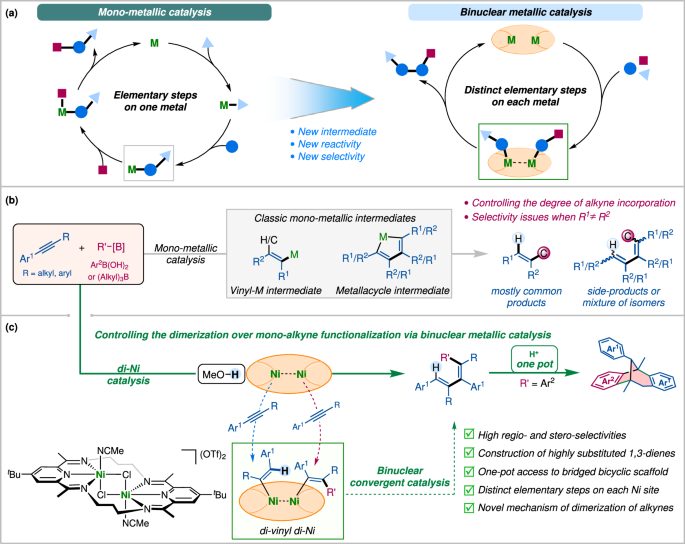Connecting patients with clinical trials using patient navigation: a scoping review protocol
Connecting patients with clinical trials using patient navigation: a scoping review protocol
Interventions are needed to increase participation in clinical trials through optimised trial design and enrolment workflows. Patient navigation is a promising intervention for increasing participation in clinical trials by optimising enrolment workflows. Patient navigation is defined as a personalised intervention aimed at overcoming barriers and ensuring timely access to healthcare services, diagnosis, treatment and care. This scoping review aims to fill a gap in current literature by summarising what is known about patient navigation, aiming to increase clinical trial participation.
A search was conducted for peer‐reviewed literature published in English from inception through 21 December 2023, and the search was updated on 5 March 2025. Sources of literature included Cochrane CENTRAL (Ovid), MEDLINE (Ovid), EMBASE (Ovid), Cumulative Index of Nursing and Allied Health (CINAHL; on EBSCOhost; EBSCO Industries, Inc), Epistemonikos and PROSPERO databases. Searches were also conducted through the Turning Research into Practice and International Clinical Trials Registry Platform (WHO) databases, Google Scholar and the Agency for Health Research and Quality platform to ensure the retrieval of all relevant articles. Reference lists of eligible studies were also examined. The Google Scholar search was limited to the first 10 pages of results. The search strategy focused on the following key concepts: navigation (eg, navigator, care coordination, case management) and clinical trials. Searches were reviewed using the PRESS Peer Review of Electronic Search Strategies 2015. This review was guided based on the JBI methodology for scoping reviews using a five-step review process: identify the research questions; search and identify relevant studies; select studies based on a priori criterion; chart the data; and collate, summarise and report the results according to the Preferred Reporting Items for Systematic Reviews and Meta-Analyses extension for scoping reviews.
This scoping review identifies and analyses existing research; therefore, ethics approval is not required. Findings will be disseminated through conference presentations and a publication in a scientific journal.
http://creativecommons.org/licenses/by-nc/4.0/
This is an open access article distributed in accordance with the Creative Commons Attribution Non Commercial (CC BY-NC 4.0) license, which permits others to distribute, remix, adapt, build upon this work non-commercially, and license their derivative works on different terms, provided the original work is properly cited, appropriate credit is given, any changes made indicated, and the use is non-commercial. See: http://creativecommons.org/licenses/by-nc/4.0/.
If you wish to reuse any or all of this article please use the link below which will take you to the Copyright Clearance Center’s RightsLink service. You will be able to get a quick price and instant permission to reuse the content in many different ways.
Interventions are needed to increase participation in clinical trials through optimised trial design and enrolment workflows.1 Patient navigation is a promising intervention for increasing participation in clinical trials by optimising enrolment workflows.2 Patient navigators were introduced in healthcare in the early 1990s in the USA to address inequitable access to care for patients with cancer.3 Currently, the definition, structure and purpose of patient navigation programmes vary considerably in terms of patient population, disease focus, programme design and implementation.2 In 2023, Chan et al published the largest overview of systematic reviews of patient navigation across the cancer continuum.2 They suggested the following definition of patient navigation in cancer care: “an individualized intervention that aims to address barriers and facilitate timely access to healthcare services, diagnosis, treatments and care”.2 Among the 61 systematic reviews and 53 published studies included by Chan et al, patient navigation was linked to an increase in access to healthcare.2 Since Chan et al’s comprehensive review of the evidence on patient navigation in cancer care, there remains a gap in understanding the purpose, design, implementation and impact of navigation programmes aiming to increase participation in clinical trials. Thus, while patient navigation is a promising strategy to improve access to cancer care, the evidence supporting its role in increasing access to clinical trials has not been systematically evaluated. This scoping review aims to critically appraise, synthesise and present the available evidence on using patient navigation to increase clinical trial enrolment. This will help identify gaps in the evidence by summarising what is known about patient navigation that aims to connect patients with clinical trials, thereby identifying areas for future research. A preliminary search of MEDLINE, the Cochrane Database of Systematic Reviews and JBI Evidence Synthesis was conducted, and no existing or ongoing systematic reviews or scoping reviews on the topic were identified.4 5
Our scoping review protocol was registered on Open Science Framework (https://doi.org/10.17605/OSF.IO/BTMYK). This review was guided based on the JBI methodology for scoping reviews using a five-step review process: identify the research questions; search and identify relevant studies; select studies based on a priori criterion; chart the data; and collate, summarise and report the results according to the Preferred Reporting Items for Systematic Reviews and Meta-Analyses (PRISMA) extension for scoping reviews.4 6
The primary research question for this scoping review was the following:
‘What is the existing evidence on patient navigation interventions aimed at increasing clinical trial enrolment, and how are these interventions characterised in terms of their design, implementation, and outcomes?’
The secondary research questions regarding the use of patient navigation to connect patients to clinical trials included the following:
The target population included any individual who may engage with navigation services within the context of healthcare, including, but not limited to, patients, their caregivers and healthcare professionals (eg, physicians, physician assistants and nursing staff). In addition, there was no geographical limitation.
The central concept being evaluated in this scoping review is patient navigation in clinical trials. As previously mentioned, the current study adopted the Chan et al definition of patient navigation, which is “an individualized intervention that aims to address barriers and facilitate timely access to healthcare services, diagnosis, and treatments and care”.2
Patient navigation has been used interchangeably with certain concepts in previous literature, and for the purpose of this review, clarification is warranted. Although patient navigation and care coordination may be viewed as overlapping terms, according to Chan et al, care coordination is a key domain of patient navigation rather than being synonymous with patient navigation.2 Care coordination primarily focuses on logistical aspects of healthcare, facilitating connections between providers and settings.7 Meanwhile, patient navigation is protocol-driven, ensuring that each patient follows an appropriate clinical pathway tailored to their needs.7 Similarly, case management and patient navigation are sometimes used interchangeably, but they serve different functions in healthcare. Case management, according to the Case Management Society of America, is “a collaborative process of assessment, planning, facilitation, care coordination, evaluation and advocacy for options and services to meet an individual’s and family’s comprehensive health needs through communication and available resources to promote patient safety, quality of care, and cost effective outcomes”.8 In contrast, patient navigation refers to the partnership between the patient and the navigator who is responsible for guiding and supporting a patient through the healthcare process, while promoting self-management through education and emotional support.8 9 Therefore, the definition of case management is more system-focused, while patient navigation is seen as more patient-centred.
Studies that evaluated the use of patient navigation to increase participation in clinical trials across all healthcare settings were included.
The scoping review included experimental and quasi-experimental study designs, analytical observational studies, descriptive observational study designs and qualitative studies. Systematic reviews and opinion papers were excluded. Systematic reviews were not included because the focus was on the details of the individual interventions, and no existing systematic reviews were identified that addressed this specific question. However, if systematic reviews with a similar scope were found, their reference lists were reviewed to identify relevant studies for the scoping review.
Studies published since database inception were included until the search was performed on 21 December 2023 and updated on 5 March 2025 (see online supplemental appendix I and appendix IV respectively). The search strategy aimed to locate both published and unpublished studies. Studies published in the English language were included to ensure a consistent and rigorous analysis of the nuanced concept of patient navigation since the review team consists of native English speakers familiar with the subtle linguistic and contextual elements of patient navigation. Additionally, due to resource constraints, systematically translating or reviewing non-English articles was not feasible. An initial limited search of MEDLINE and CINAHL was undertaken to identify articles on the topic. The text words contained in the titles and abstracts of relevant articles, and the index terms used to describe the articles were used to develop a full search strategy for Cochrane CENTRAL (Ovid), MEDLINE (Ovid), EMBASE (Ovid), Cumulative Index of Nursing and Allied Health (CINAHL; on EBSCOhost; EBSCO Industries, Inc), Epistemonikos and PROSPERO databases. Searches were also conducted through the Turning Research into Practice and International Clinical Trials Registry Platform (WHO) databases, Google Scholar and the Agency for Health Research and Quality. The search strategy focused on the following key concepts: navigation (eg, navigator, care coordination, case management) and clinical trials (see online supplemental appendix I). The search strategy, including all identified keywords and index terms, was adapted for each included database and/or information source. The reference list of all included sources of evidence will be screened for additional studies. Sources of unpublished studies and grey literature will be searched separately from the search strategy above, including conference abstracts, trial registries, thesis repositories, institutional databases, preprint servers, government reports and professional organisation websites.10 Searches were reviewed using the PRESS Peer Review of Electronic Search Strategies 2015.11
We will use DistillerSR software (Evidence Partners In, Ottawa, Canada) to conduct the screening in this review. Identified citations will be collated and uploaded into DistillerSR where duplicates will be removed. All citations will be screened by two independent reviewers. We will conduct a pilot test, where each researcher will first code 10% randomly selected citations. Cohen’s κ coefficient will be used to calculate inter-rater reliability, a statistical approach to assess how well independent coders can agree with each other without any discussion.12 Cohen’s κ>0.80 is indicative of satisfactory reliability.13 14 Following a pilot test, titles and abstracts will then be screened by two independent reviewers for assessment against the inclusion criteria for the review. Potentially relevant sources will be retrieved in full and their citation details imported into the JBI System for the Unified Management, Assessment and Review of Information (JBI, Adelaide, Australia). The full text of selected citations will be assessed in detail against the inclusion criteria by two independent reviewers. Reasons for exclusion of sources of evidence at full text will be recorded and reported in the scoping review. Any disagreements that arise between the reviewers at each stage of the selection process will be resolved through discussion or with an additional reviewer/s. The results of the search and the study inclusion process will be reported in full in the final scoping review and presented in a PRISMA-ScR flow diagram.4
Data will be extracted from papers included in the scoping review by two independent reviewers using a data extraction tool developed by the reviewers. Data will be extracted using tables 1–4 in online supplemental appendix II, which collect data regarding study design and information based on the frameworks RE-AIM (Reach, Effectiveness, Adoption, Implementation, Maintenance), PRISM (Practical Robust Implementation and Sustainability Model) and TIDieR (Template for Intervention Description and Replication) to include key findings relevant to the primary and secondary research questions.15–20 By using the RE-AIM, PRISM and TIDieR frameworks, information will be collected on the programme’s impact, its context and fit during implementation and in real-world settings, and sufficient details about the intervention, respectively.16 17 19 The following data will be collected: existing patient navigation interventions along with their design and implementation process, outcomes, required qualifications or training for navigators and information regarding the focus on equity-deserving or underrepresented groups (if applicable).21 The patient navigation interventions will be classified based on Chan et al’s domains of patient navigation (see online supplemental appendix III).2 These domains represent the most up-to-date and comprehensive review of patient navigation interventions. They include the following domains: care coordination, education/information provision, empowerment, comfort/emotional support, direct care provision, advocacy, language assistance, logistics assistance and financial assistance.2 Outcomes of patient navigation will be described based on Core Outcome Measures in Effectiveness Trials (COMET) (see online supplemental appendix III).22 COMET is a framework that establishes standardised outcome sets, known as the ‘core outcome sets’, which define the minimum outcomes that should be measured and reported for studies evaluating the effectiveness of interventions.22
Previous work by Tsou et al supports that artificial intelligence (AI) tools can be beneficial for reviews with ≥2500s.23 We will use DistillerSR’s AI tools to assist with screening. We will cross-check screening results using DistillerSR’s Check for Screening Errors tool. The tool helps users reassess exclusions to catch any potential mistakes. The tool learns patterns from the references the user has already reviewed through 10-fold cross-validation.24 Instead of using all references at once, it repeatedly trains on different subsets of the data by dividing the reviewed references into 10 subsets.25 The tool then trains on nine of these folds and tests on the remaining one, repeating the process 10 times, each time using a different subset for testing.25 This ensures a more robust and generalisable model, reducing the chance of bias. We will use the Screening Prioritization tool, which uses machine-learning algorithms trained on a subset of citations to order citations for screening and present titles and abstracts with the highest probability of meeting the inclusion criteria first. By using the Screening Prioritization tool, we will be able to use a ‘stop screening approach’ in the first-level title and abstract screen. A ‘stop screening approach’ is where the review team stops screening when citations fall beneath a specified probability for inclusion.26 This is called the ‘estimated recall rate’, and it can be calculated using DistillerSR’s AI tools after a certain number of references have been screened and conflicts resolved (usually at least 2% of the total number of references).26 In the current study, an estimated recall rate of 95% will be used. This means that the review team has likely identified 95% of all relevant references in the data set at the point where they stopped screening. In other words, the AI tool predicts that only a small percentage (5%) of relevant references remain undiscovered among the citations that were not screened. This allows the team to stop screening early while still being confident that they have captured the vast majority of relevant studies. A recent study by Hamel et al found that when they aimed for a 95% recall rate, they nearly eliminated missed studies.27 They suggested this happened because the remaining 5% of records were erroneously included in full-text screening because reviewers tended to err on the side of including a study rather than excluding it.27 This leads to over-inclusiveness while screening; therefore, using an estimated recall rate of 95% can ensure efficiency without significantly missing key studies.27
The data will be presented in graphic or tabular form. A narrative summary describing how the results relate to the review’s objective and question/s will accompany the graphic and/or tabulated results.
A qualitative content analysis was chosen to answer the research questions of this scoping review. Qualitative content analysis is a descriptive method that involves open coding to classify concepts or characteristics into overall categories.28 29 Specifically, we will use a deductive content analysis, which is when the analysis is guided by an existing theory, framework or literature to construct an initial coding scheme for data analysis.29 30 This approach was deemed a suitable analysis method for this scoping review because existing literature was available for an initial coding scheme. During extraction, patient navigation interventions will be sorted according to Chan et al’s domain classification for patient navigation care and components for the interventions.2 Primary outcomes extracted from articles will be classified based on the COMET.22 A codebook will be established based on Chan et al’s domain classification and COMET.2 22 A draft codebook is provided (see online supplemental appendix III). The selected articles will be imported into NVivo V.11, a qualitative data analysis software.31 Two coders will be trained to use NVivo V.11 and familiarised with the codebook. Everything will be coded in duplicate, and another researcher on the team will resolve any conflicts. Once the coders reach a satisfactory level of agreement, they will code the rest of the selected articles independently.
Additionally, two independent researchers will extract data using single-word responses to conduct frequency counts of the data based on the following frameworks: RE-AIM, PRISM and TIDieR frameworks (tables 2–4 in online supplemental appendix II).15–20 29 Similar to the deductive content analysis, everything will be extracted in duplicate, and another researcher on the team will resolve any conflicts. Cohen’s κ coefficient will be used to assess inter-rater reliability for data extraction, similarly to its use with screening of records.32
Data will be presented in various formats, including tables and a narrative description to summarise the available evidence and results.29 A heat map will illustrate the number of included studies conducted in each country worldwide, while a waffle chart will highlight the types and percentages of study designs used.29
After the search was conducted on 21 December 2023, first-level screening (title and abstract) began on 24 December 2023 and ended on 24 August 2024. Second-level screening (full-text) started shortly after and was completed by 2 January 2025. Data extraction began on 5 October 2024 and is currently ongoing. Data analysis is expected to begin in mid-March 2025 and be completed by mid-April 2025. Manuscript writing will then begin in mid-April 2025. A manuscript will be submitted by August 2025.
The search strategy and results were updated on 5 March 2025. Therefore, reviewers will complete first-level screening and second-level screening of the new articles retrieved by the end of March 2025.
This scoping review will include patients and caregivers from the research team when interpreting the results, publishing the review and disseminating the results. The GRIPP2-SF checklist will be used to report patient and public involvement in our scoping review.33
To interpret the results, a meeting will be held with patients and caregivers, where initial results will be presented.34 Through discussion, the group will collaboratively refine the results and discussion.34
In terms of disseminating the results and publishing the review, a meeting will be held once again with patients and caregivers to discuss a plan regarding how to share results.34 Patients and caregivers will be involved in creating dissemination material through public media. Additionally, group members will discuss their roles, such as contributing to the patient perspective discussions at conferences.34
This scoping review is secondary research that identifies and analyses existing and publicly available research. Therefore, ethics approval was not required. Throughout the lifecycle of this scoping review, experts in clinical trials and patient navigation will be consulted for insights and feedback as part of integrated knowledge translation activities. Traditional end-of-grant knowledge translation activities will be undertaken, including peer-reviewed publications and scientific presentations. This scoping review will inform the development of future research proposals.
Not applicable.










